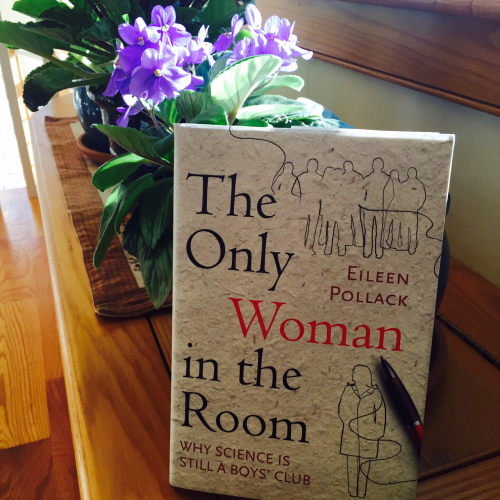The Only Woman in the Room: Why Science is Still a Boy’s Club
The Only Woman in the Room by Eileen Pollack is a blend of research and a often poignant account of her early interest in math and science, her work as one of the first two women to earn a Bachelor of Science degree in physics at Yale in the 1970’s, and the circumstances under which she decided to change her focus on science to literature. She values her present life writing and teaching creative writing at the University of Michigan, but her grief for what she left behind is palpable. As she describes her joy in asking questions about the nature of the universe, and an ease with mechanical things – she recounts her father’s directive to fix her own toilet -– we also feel the loss.

The book expands upon Eileen Pollack’s important New York Times article, Why are There Still so Few Women in Science? I read this 2013 article while writing Finding Wonders: Three Girls Who Changed Science, a book for readers ten and up that will be published this fall. Pollack’s notes about the need for girls to have role models, and particularly to see how women managed to balance careers with other aspects of life, were affirming. If you lack time to read this great article at the moment, you might at least check out the stunning photo of a 1927 physics conference where Marie Curie is the only woman in attendance.
While Eileen Pollack often felt alone or at least in the minority as a female in science classes, she uncovers research that highlights how she was one of many who showed an interest and strength in science, but left their fields. Often this was less about talent – she meets plenty of men who don’t let poor grades stop them – but because they felt discouraged or dismissed. As a writer, mentors praise her, but not in science classes, where she performs equally well. Some men dismiss the wanting of validation as a weakness. But why should a need for one’s successes to be seen be called that? What’s wrong with wanting to feel good about your work and part of a community?
She describes how boys tend to be raised to be more confident, while girls are expected to be modest, which can tend to make them see themselves as less intelligent than their classmates when they’re not. Even one person who believes in you can make a difference. Again, I found this with my research on Maria Sibylla Merian, Mary Anning, and Maria Mitchell for Finding Wonders: all had fathers who encouraged and were proud of their daughters’ success.
In the 1800s, astronomer Maria Mitchell wrote: “science needs women.” Eileen Pollack demonstrates how this is still the case, and notes how a woman’s presence in a laboratory can shift values so that not only women but men feel it’s all right to stay home with a sick child or take off an afternoon to attend a child’s recital, game or event. When Marie Curie ran her Radium Institute, she insisted on breaks for exercise and fresh air.

This book’s core is Eileen Pollack’s own story, which she narrates in fascinating detail. She’s honest about events and her responses, which are sometimes sad, but she cites hope for change and brings in humor, with chapters titled, “Science Unfair,” “Freshman Disorientation,” and “The Women Who Don’t Give a Crap.” She includes research and interviews former teachers and classmates as well as those studying and teaching now. There are some differences, but not enough. When she goes to Yale to speak about women’s role in science, the then chair of the Department of Physics expects only a few students to attend her talk, as certainly struggles from decades back are less relevant today. But the hall fills, and Meg Urry clears her full calendar to discuss the issues further. Women in science still struggle with issues different from those facing men. Reading this book is a step forward.





